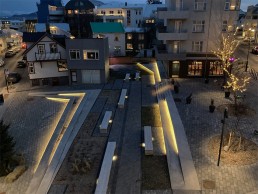
Óðinstorg, Iceland
Lighting designers at Verkís collaborated closely with Basalt Architects to create a seamless, integrated lighting scheme for Reykjavík’s new public square, Óðinstorg.
Literally translated as Odin’s Square, Óðinstorg is a new public space introduced to the heart of the Icelandic capital of Reykjavík.
Previously mostly used as a parking lot, the square is the end result of an urban design competition, in which Basalt Architects and lighting designers at Verkís sought to regenerate the square so that it could fulfil its true potential as a liveable urban space.
The design team proposed that this space would place a special emphasis on winter and darkness – owing to Reykjavík’s location as the northernmost capital city in the world. This meant that the nighttime scene was integral to the design concept, both architecturally and in terms of lighting, from the very beginning.
However, the lighting strategy from Verkís was not of illumination, but rather a “more holistic vision of this area for the night, whereby lighting was based on the elements composing the urban and landscape design, with fixtures becoming integrated into these elements where possible. The purpose, Verkís believe, is to create an inviting atmosphere, even in inclement weather.
Darío Núñez Salazar, Lighting Design Leader at Verkís, explained the lighting concept further: “The idea is always to create the most adequate atmosphere, while being coherent with the architecture and landscape concept. In this case we tried to minimise the use of light poles or luminaires that are perceived just as an added isolated element.
“We rather wanted the light to flow ‘naturally’ from the landscape features. And if really needed, light poles and luminaires would have to be as discreet as possible. This is also to be coherent with the future changes that the city of Reykjavík is making regarding the master lighting plan for the city. We wanted to bring light to the area, without luminaires.”
As the square sits in the middle of a built-up area, Núñez Salazar was keen to include the surrounding buildings within the scene, but as such, extra precautions had to be taken to ensure that any new lighting wouldn’t become obtrusive or invasive to these buildings. “That’s why it was so important to avoid new outstanding visual features,” he said. “We wanted to give some room for a natural character to take form by itself, and then it was all about using the new landscape features and finding every opportunity to integrate light.”
As such, the lighting designers called on recessed or integrated linear fixtures from LightGraphix and iGuzzini, which were embedded into benches, handrails and steps. This decision, Núñez Salazar believes, allows the light to “flow through the landscape and architectural or landscape features,” while avoiding “conventional” luminaires.
Where needed though, area lighting was solved by discreet poles fitted with iGuzzini’s Palco InOut luminaires, that don’t compete with other urban elements.
The design competition for Óðinstorg was launched in late 2015, while Verkís and Basalt Architects were commissioned by the City of Reykjavík to further develop a detailed design for the square in 2018. With the project completed in 2020, Núñez Salazar said that the rapid turnaround time was a slight challenge for the lighting design team, but it didn’t hinder an otherwise enjoyable project.
“As with many other things in Iceland, things needed to be done quite rapidly, but we did have a good time. Especially since most of the concept work was done during the competition phase,” he said.
“I don’t remember this project as a much-suffered one, at least for the lighting. Perhaps the electrical plan was a more complicated story, as during the project we had to switch from conventional lighting controls to smart systems, and the project also needed to be future-proofed.”
Various future-proofing methods were implemented by Verkís; all luminaires are digitally addressable to allow for future connectivity. Meanwhile the current programming setup runs different scenes depending on the season and time of day.
Throughout the project, Verkís worked very closely with Basalt Architects – a practice that is well known for knowing and thinking about light in its work. This meant, according to Núñez Salazar, that the architects “give a lot of respect to qualified lighting designers”.
“That doesn’t mean that you can do whatever you want though. They have a clear vision, not really about the final lighting solution, but about the experiences they want to create, and then they are open to hearing the ideas or thoughts from the lighting designers.”
This close collaboration, from the initial concept stages right through to completion, is an aspect that particularly stood out to Núñez Salazar, as was the attention paid to lighting from the very start. “It is a completely different story when the architects and urban designers start discussing the nighttime vision from the very beginning, and not left as an installation merely needed to illuminate the space during the night.”
This approach has resulted in a space where lighting feels like an integral part of the design and a key aspect of the intended ambience, rather than an afterthought that was retro-actively implemented.
Núñez Salazar added that the lighting brings a special character to the square: “I think once we finished tuning all the light sources, everything now feels in its right place. The integrated lighting brings a special character to the square, without taking too much attention from the things already existing in the area. Even though this was a significant transformation for the space, things feel like they belong there.”
Although completed in the midst of the Covid-19 pandemic, open-air, public spaces have become integral to facilitating mental health and wellbeing, and Núñez Salazar feels that Óðinstorg is no exception. “This square was meant to provide a welcoming atmosphere both as a place to mingle, and as a transitional space,” he said. “I have walked around it in darkness before and after the restrictions, and I would say that even now that it could look a little ‘empty’, the lighting features inspire optimism that things will again happen there for the better.
“I know that many other things will not change back after the pandemic. I just hope we don’t take a step backwards and become again afraid of the night and darkness. Even so, I believe this square will always invite you to stay a little longer.”



